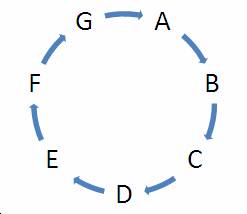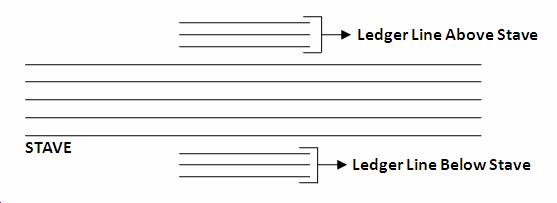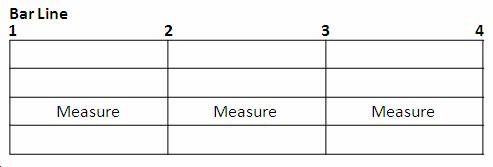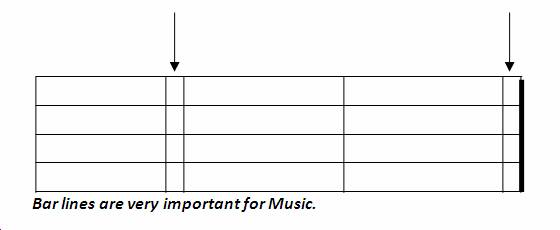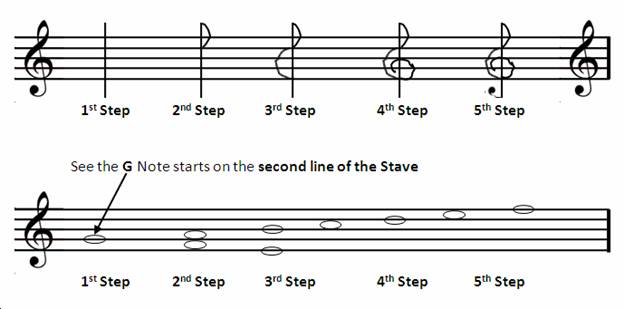Theory of Western Music
Music is a combination of tune and rhythm. Tune is a succession of tones.
Music has a pattern of SHORT and LONG tones. The combination of these tones written in notes is called RHYTHM.
Characters called NOTES explain the musical SOUNDS or TONES. The tones are named in ascending order from the seven letters of the alphabet i.e. A B C D E F G according to the PITCH. The word Pitch used to describe how high or low sound is produced. The lowest to the highest pitch is repeated again and again by the SEVEN NOTES A B C D E F G. If we look at the figure below, we can understand the REPEATATION.
A B C D E F G . . . A B C D E F G . . . A B C D E F G |
LOW……………………………………..MIDDLE……………
……………………HIGH
ROUND AND ROUND |
See the circle below and look how the seven notes A B C D E F G are arranged in a circle.
Now read the A Note and go round the circle reading B C D E F G. You will come back to the note A again. In the same way if you start with the other letter you will come back to the same letter.
THE STAVE
The notes show the PITCH of the tones in the music and are represented by
These notes are written on a STAVE consisting of FIVE HORIZOTAL LINES and FOUR SPACES. These lines are parallel and numbered upward as shown in the figure below. The Stave is also called THE STAFF.
LEDGER LINE
Sometimes these five lines and four spaces may not be enough, when the sound of the music is going higher or lower than the Stave. Hence we need something to add above or below the Stave to represent the note. Hence we add one or two or three smaller lines above or below the Stave. The addition of the smaller lines above or below the Stave is called LEDGER LINES. We can also add smaller lines above or below the Stave according to our need.
BAR LINES
Music is divided into equal portions by vertical lines called BAR Lines. The distance between the bar lines is called MEASURES.
DOUBLE BAR LINES which are marked with thin and thick lines indicate the end of a piece. Thin Double Bar Lines mark the end of a section.
SEVEN NOTES
Seven notes explain the musical sounds.
Any appliance for example produces a customary sound and these musical sounds or tones can be encompassed within the seven notes.
| Carnatic System | Sa | Ri | Ga | Ma | Pha | Dha | Ni |
| Western System | C | D | E | F | G | A | B |
| Latin System | Do | Re | Mi | Fa | Sol | La | Si |
The Seven Notes in Carnatic or Hindustani system are called as ELZU SWARANGAL.
Say “Ga” or Say “Mi”, both mean the same. Just that, different systems have identified different syllables to represent the seven notes.
KINDS OF NOTES
As we cannot write the musical notes A B C D E F G on the Stave, we have symbols to represent these notes and they are called NOTATIONS. These notations are valued according to the COUNTS or BEATS.
|
Sl. No |
Name of the Note |
Symbol |
Counts |
|
1 |
SEMIBREVE |
4 COUNTS | |
|
2 |
DOTTED MAXIM |
 |
3 COUNTS |
|
3 |
MINIM |
 |
2 COUNTS |
|
4 |
CROTCHET |
 |
1 COUNTS |
|
5 |
QUAVER |
 |
½ COUNTS |
|
6 |
SEMIQUAVER |
 |
¼ COUNTS |
|
7 |
DEMI SEMIQUAVER |
 |
1/8 COUNTS |
With the help of these notations we can write sound on paper. Guitarists and electric bass players read these notations represented on the sheet and perform music.
Notations are basically written instructions which help the musicians to read the notated music and perform.
THE CLEF
These Notes can have certain PITCH or NAME until some distinguishing Mark is placed at the beginning of the STAVE and this mark is called a CLEF. A clef means a key and thus the Clef becomes the Clue to the names of the NOTES on the Stave. In this Connection, we have four Clefs. They are
- Treble Clef
- Bass Clef
- Alto Clef
- Tenar Clef
Now we will see only the Treble Clef which will serve our purpose. The Treble Clef is also called G clef because it circles round the second line of the Stave and fixes the line …G… so that a note on that line represents a sound called…G… From this, the Clef is not only known as Treble Clef but also as G clef.
It is the Clef that determines whether the music has to be played with the right hand or the left hand.
G clef for “Right Hand” and
F clef for “Left Hand”
THE G CLEF
The G clef means the note -G- starts on the second line of the Stave. The Clef sign is always put at the beginning of the Stave. The G clef sign is shown below.
When the G is fixed on the second line A will be on the second space, B on the third line, C on the third line and so while going up which we call it ASCENDING. In the same way while coming down we have F on the first space, E on the first line. It is called DESCENDING.

